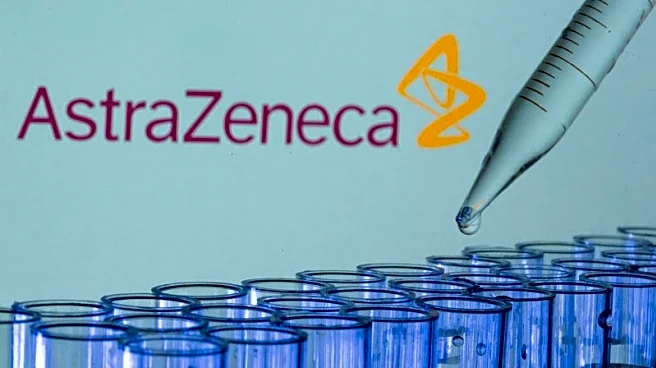What's Happening?
A new chemical reaction involving reductive radical chain initiation through the thermal generation of carbon dioxide radical anion has been developed, offering potential applications in industrial drug discovery. The reaction utilizes an azo initiator
and sodium formate, monitored by electron paramagnetic resonance spectroscopy. The study demonstrated the formation of CO2 radical anion, which can initiate electron-catalyzed radical-nucleophilic substitution of aryl halides with enolate nucleophiles. This transition-metal-free approach is significant due to its compatibility with heteroaromatic systems and avoidance of issues related to the cost and toxicity of transition metals. The reaction was successfully scaled up, providing product in high purity, indicating its potential for large-scale applications.
Why It's Important?
This development is significant for the pharmaceutical industry as it offers a new method for synthesizing biologically active compounds without the need for transition metals, which are often costly and pose environmental and ethical concerns. The ability to perform these reactions on a large scale with high purity is particularly valuable for drug discovery and production. The method's compatibility with complex heteroaryl systems enhances its utility, potentially leading to more efficient and sustainable drug manufacturing processes. This innovation could reduce production costs and improve the environmental footprint of pharmaceutical synthesis.
What's Next?
The reaction's scalability and compatibility with various substrates suggest it could be widely adopted in pharmaceutical manufacturing. Further research and development may focus on optimizing the reaction conditions and expanding its applicability to other chemical processes. Collaboration with industry partners, such as AstraZeneca, indicates potential for immediate application in drug discovery programs. The method may also be explored for other industrial applications where transition-metal-free processes are advantageous.
Beyond the Headlines
The development of this reaction highlights the ongoing efforts to improve chemical synthesis methods in response to environmental and ethical concerns. By reducing reliance on transition metals, this approach aligns with broader industry trends towards sustainability and cost-effectiveness. The innovation also underscores the importance of interdisciplinary collaboration in advancing chemical research and its applications.














